Everything You Need to Know About Inflatables
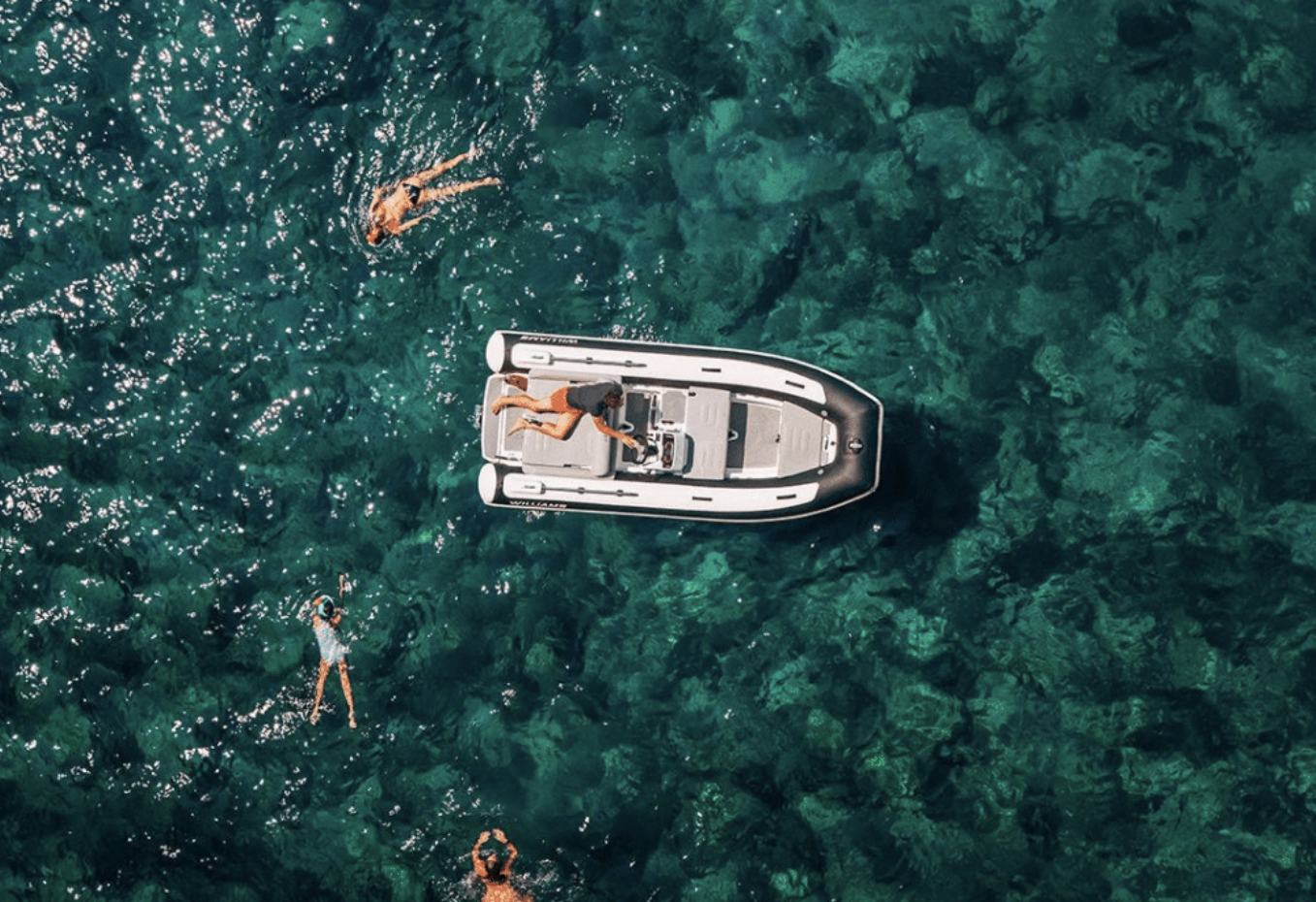
Whether putting out multiple anchors in a crowded anchorage or going ashore for groceries, every cruising boat needs a dinghy. They come in an impressive selection of designs, materials, sizes and performance levels.
Dinks, dinghy’s, tenders or ship’s boats range in size from ridiculously small to amazingly large. While there are still some conventional wood or composite dinghies, inflatables have taken over the market since they have become more durable and dependable – to say nothing about being a lot safer. Their soft finishes don’t mar the skin of the mother ship, and they have impressive load capacity and stability for minimal weight.
Zodiac pretty much founded the rigid inflatable boat (RIB) industry with designs for the French military in the 1930’s. Today they are one of the major players in the field with RIB’s up to 29’ 2” long (8.8 M) and rated for twin 350 HP outboards.

Zodiac is the builder of the storied Zodiac Milpro Futura Commando 470, the Combat Rubber Raiding Craft or CRRC used by U.S. amphibious forces as well as many others. See more on their lineup in Part 2.
Inflatables designed for recreational use share many of the characteristics of amazing flotation and load capacity, but most today include many more creature comforts.
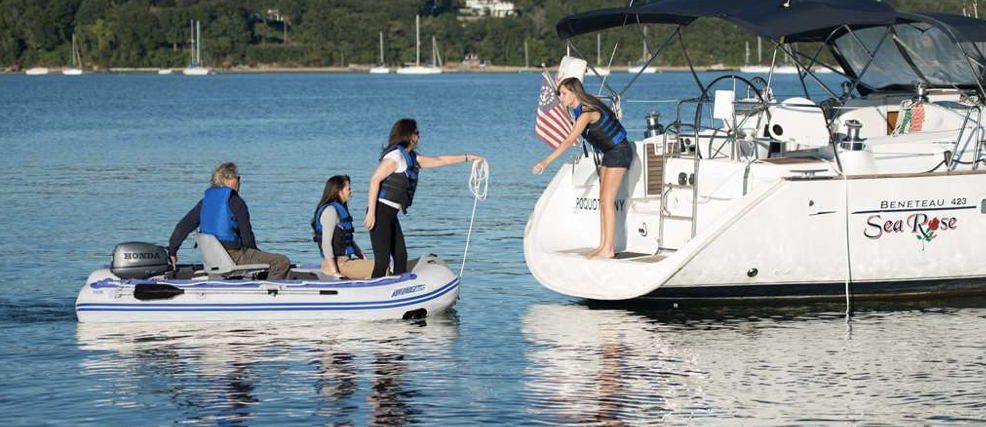
The RIB models also have a very low center of gravity because much of the weight is concentrated in the hard bottom, making the boats very resistant to flipping.
Size can vary from 7’ (2.1 M) packable models designed for rowing to 40’ (12 M) twin-engine machines that cost well into six figures.
For smaller boats, packable inflatable dinghies allow easy transport to a distant location without taking up space on board.
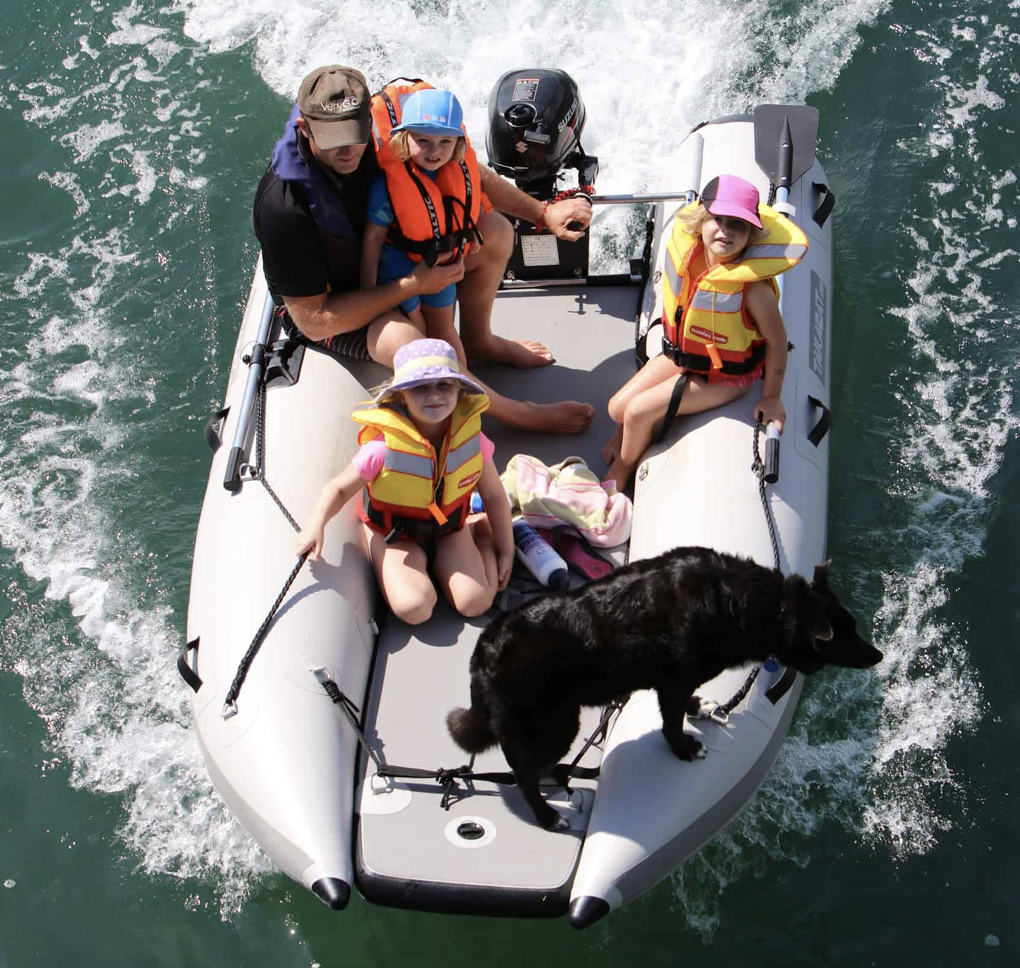
These smaller models are also very easy to launch both from the boat and from a beach due to their light weight. And they can readily be carried fully-inflated and ready to go on the swim platform of most mid-size and larger powerboats.
But far from merely functioning to get the crew ashore and back, many dinghies are now full-featured recreational boats that greatly expand the usability of any yacht, allowing diving, fishing, shelling and beach-combing expeditions into waters where the mother ship could never venture due to draft considerations.
Those that can accommodate outboards above 20-HP can also function to tow tubers, while larger, faster models can act as skiing and wake-surfing platforms.
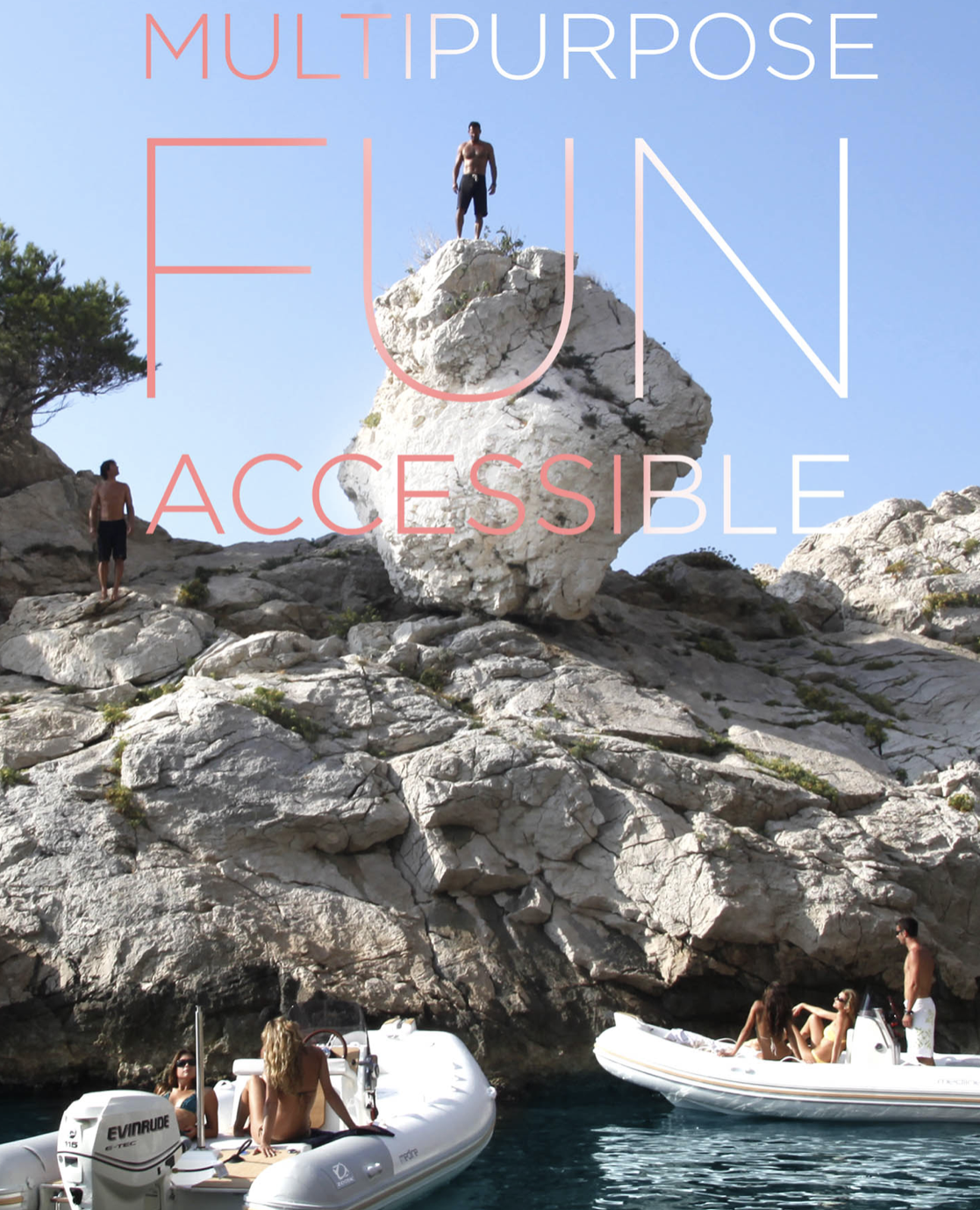
Whatever the size of your dinghy, it should be easy to launch and reload - if not, you won’t use it as often as you might like to explore those tempting harbors, coves and flats.
Davit systems - cranes - make it easy getting relatively large tenders aboard, so long has they are hydraulic or powered. A transom garage is another way for a boat that can’t stow a RIB any other way, to keep one aboard.
Most expert cruisers don’t recommend towing the dink any more than you have to because of the danger of getting the tow line into the propellers. Towing also constrains your speed in planing powerboats - most small dinghies tend to roam unpredictably when pulled behind a planing hull - and many have come to grief this way by distracted captains.
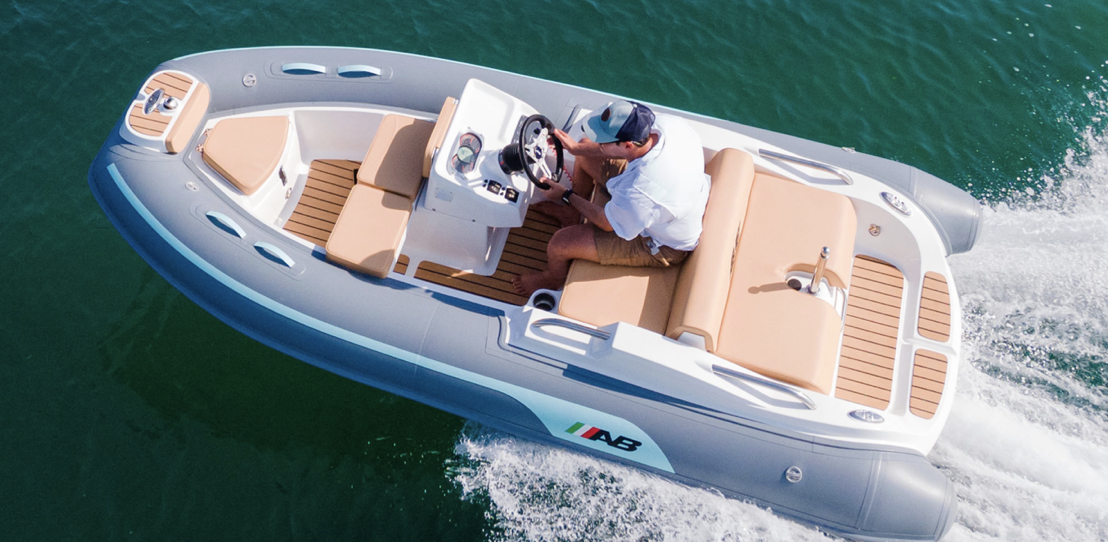
Rough seas can also give a small dinghy a beating when towed - better to keep it aboard when moving at speed if you can.
Hull Materials
The classic dinghy was planked wood, but now most are waterproof fabric with inflatable tubes providing a huge amount of flotation for minimal weight.
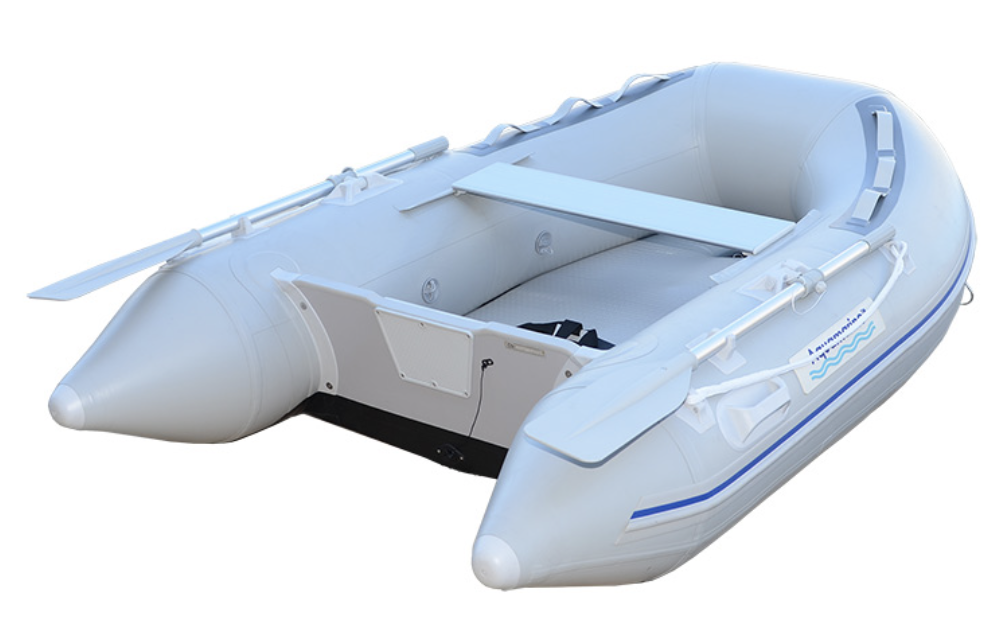
The least expensive and lightest inflatables have inflatable floors. High pressure floors can provide reasonable rigidity and these dinghies are much lighter (and more affordable) than those with aluminum or fiberglass bottoms. They can also be deflated for storage aboard or ashore.
The inflatable tubes are typically made of multiple layers of PVC, coated neoprene or Hypalon.
Hypalon is a synthetic rubber made of chlorinated and sulfonated polyethylene. It’s widely considered the best material for the inflatable parts of a dinghy due in part to extended resistance to UV rays.

Dinghies come in a variety of hull styles and materials, including plank-reinforced fabric bottoms, high-pressure inflatable bottoms, and rigid hulls of fiberglass or aluminum.
Particularly if you intend to beach the dink regularly, a hard-bottom inflatable - a RIB will serve you much better, though they are heavier and much more expensive.
How Big Should You Go?
Tenders that will fit aboard most boats and yachts range from 7’ to 20’ LOA, but there are numerous much larger RIB’s that can function as towable tenders, with lengths to more than 40’.
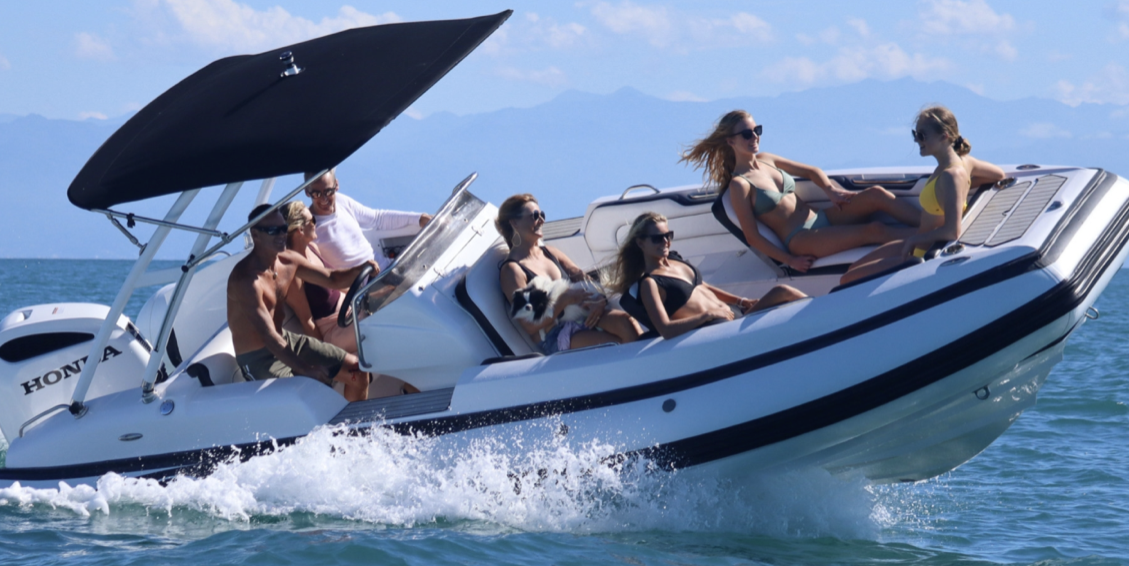
In general, most who have bought multiple tenders say go big to start and you’ll be happier.
More LOA not only means more carrying capacity and more safety, but also easier steering and a drier, safer ride.
The LOA will be a major factor in how many the tender can haul ashore and back per trip, so it’s wise to consider the likely number of guests aboard.
Also, while small dinks can be rowed or pushed by an electric motor, larger ones will need gasoline outboard or jet power. The latter will get you ashore much faster, obviously, but will greatly increase the cost and the concerns with gasoline storage aboard. (Williams is among the few offering diesel powered dinghies - more on them in Part 2, our review of some of the best tenders currently on the market.)

Buy a well-known brand with a dealership near your home port and you won’t go far wrong.
Summary: 9 Questions to Consider When Shopping for a Tender
- How many people are likely to go ashore at one time? A bit of extra capacity won’t cost a lot and will be greatly appreciated.
- How far are you likely to run the tender between ship and shore? If you mostly anchor in protected harbors, a smaller model with inflatable floor will work well, but if you often anchor well offshore, more LOA and a bottom of aluminum or fiberglass - a RIB design - will make for a safer and much faster trip ashore.
- What power system do you want? Oars are simplest and cheapest, obviously, but this makes for slow going. Tenders with a motor mount allow electric or gasoline outboards to do the work for you and make the trips much faster. A few premium models have gasoline or diesel jet power, pricey but very safe and efficient.
- Will the boat be used in the tropics? If so, Hypalon builds will last much longer than PVC due to their UV resistance. PVC, on the other hand, is less costly.
- How will you store the boat? Davits or a transom garage open up the field, while a swim platform limits the choices.
- Will you keep the boat permanently inflated? More storage space is needed, but this is much more convenient.
- What’s your budget for a tender? They range from under $1,000 to over $100,000, so whatever your price level, you can find something to suit.
- How long is the warranty? Inflatables don’t have the life span of “hard” boats, obviously - a good warranty can ease the pain of replacing them early. (Some Hypalon tenders survive 10 years of service, in any case.)
- If you boat in remote locations, will there be service centers for your brand in major ports? The well-established names offer hundreds of centers, while others have few.
In Part 2, we’ll look at some of the best models on the market today.